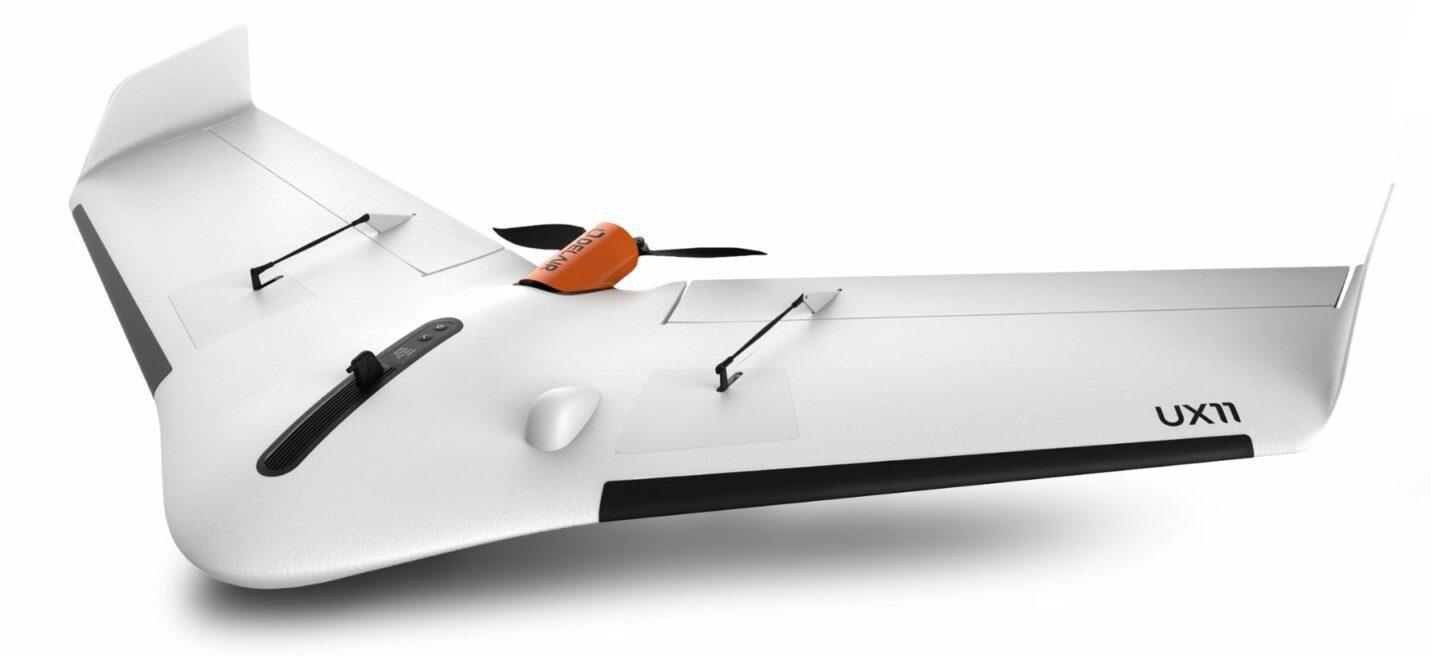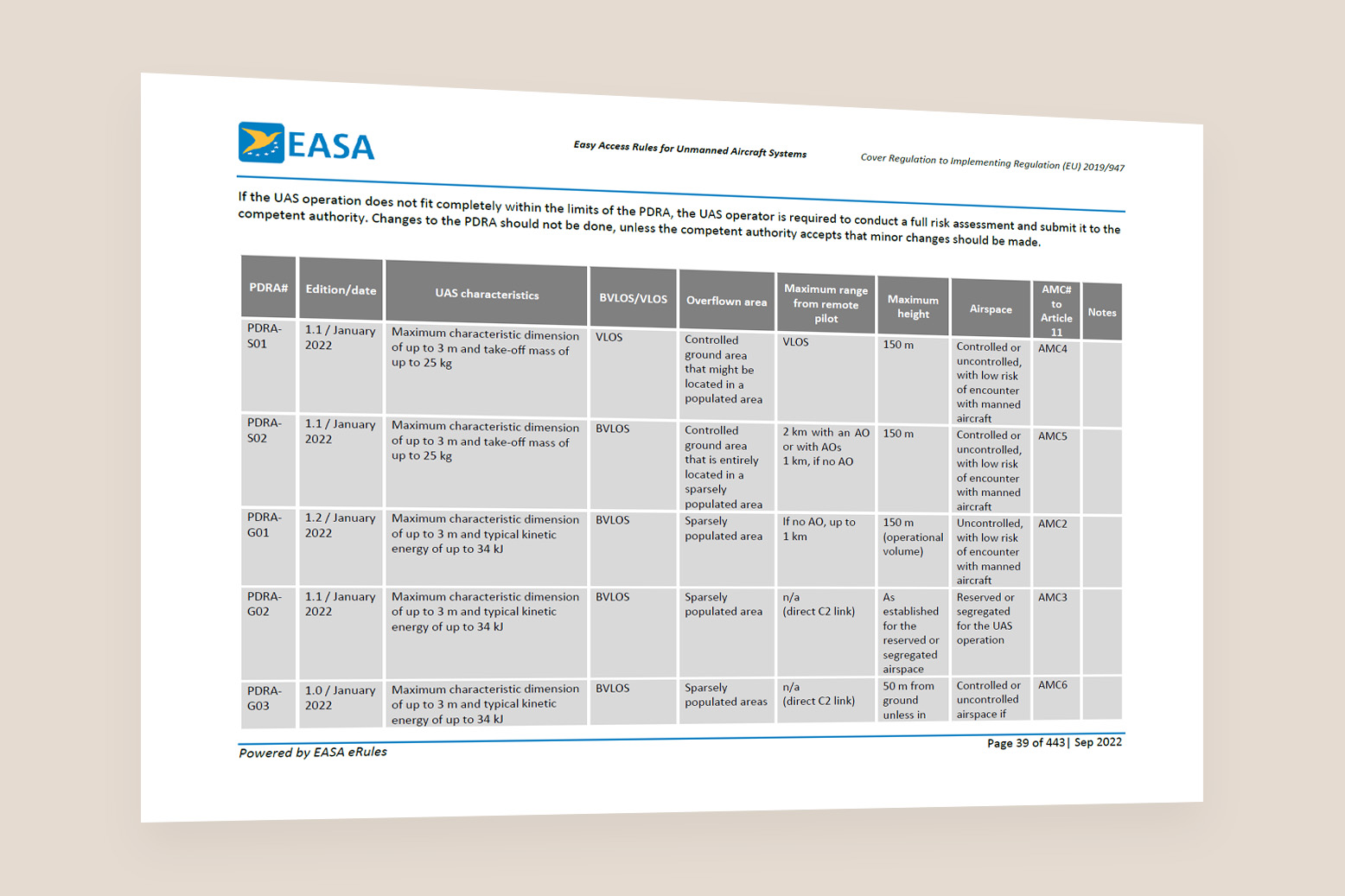Assuming that the requirements for a predefined operation are met, STS and PDRA can simplify the process of getting started with drone operations in a specific category.
Specific Category
Drone operations that cannot be conducted according to regulations and requirements set in the open category will most likely fall under the specific category. This is unless the operation poses a risk profile equivalent to manned aviation, which requires certified categorization. The specific category reflects operations with medium risk. Operations in the specific category will require the operator to either declare or apply for operational authorization.
In the specific category, there are mainly three different ways to operate:
Standard Scenario (STS), Operator Authorization (PDRA/SORA), or the more comprehensive Light UAS Operator Certificate (LUC). The latter is not further discussed here.
What are STS and PDRA?
STS (Standard Scenario) and PDRA (Pre-Defined Risk Assessment) are predefined operations that describe requirements for drone systems, competence, and operational limitations. The purpose is to simplify drone flight in the specific category by eliminating the need for operators to develop their own risk assessments using the SORA methodology.
As long as the rules of the predefined operation are met, one can either declare STS or apply for operator authorization based on PDRA. Declaring STS avoids the approval process, allowing immediate flight upon receiving registration notification from the Civil Aviation Authority. A predefined PDRA will be tailored to various operation types and streamline the approval process by the Civil Aviation Authority.
Operations not Covered by STS and PDRA
If the intended drone operation cannot be carried out under the rules of STS or PDRA, the operator must independently create risk assessments following the SORA methodology. You can learn more about this in the article: Introduction to the SORA Methodology.
Predefined STS Operations
The rules for standard scenarios apply from January 1, 2024, and can only be declared after the new year. Two predefined standard scenarios have been published:
STS 01 – VLOS (Visual Line of Sight) over a controlled ground area in a populated area
Maximum altitude of 120 meters
No external individuals within the operational area
Requires a C5-marked drone
STS 02 – BVLOS (Beyond Visual Line of Sight) over a controlled ground area with or without airspace observer
Maximum altitude of 120 meters
BVLOS up to 1 km from the drone pilot, or 2 km with an airspace observer
Requires a C6-marked drone
The rules for STS 01 and 02 are described in Appendix 1 of Regulation (EU) 2019/947. This attachment can be found on page 356 of the document "Easy Access Rules for Unmanned Aircraft Systems."

Europe's first C6-marked drone from the drone manufacturer Delair can be used for STS 02 starting from the new year. Photo: Delair
Predefined PDRA Operations
A PDRA is a pre-approved risk analysis for a defined operational scenario, which can be used as a basis for operator application in the specific category. Each PDRA sets requirements that the operator must fulfill to obtain an operator authorization. To provide greater operational flexibility, PDRA accommodates various operation types and does not demand C-marked drones. The following PDRA have been published:
PDRA S01 – VLOS over a controlled ground area in a populated area
Describes the same operation as STS 01, but without the requirement for a C5-marked drone
PDRA S02 – BVLOS over a controlled ground area with airspace observer
Describes the same operation as STS 02, but without the requirement for a C6-marked drone
PDRA G01 – BVLOS under 120 meters in uncontrolled airspace over sparsely populated area, with or without airspace observer
PDRA G02 – BVLOS within radio range in a reserved or segregated airspace over sparsely populated area
PDRA G03 – BVLOS within radio range under 30 meters or close to objects in sparsely populated area
An overview of published PDRA with references to the rules can be found on page 39 of the document "Easy Access Rules for Unmanned Aircraft Systems."
Competence Requirements and Skill Certificate
Regardless of whether one wishes to operate under STS-01/02 or PDRA-S01/S02, the following is required:
Practical and theoretical training
Passing the STS exam
A practical skills test
The other PDRA operations have different requirements for pilot competence, and passing the STS exam might not be necessary.
Our theoretical and practical basic course in the specific category covers the pilot competence requirements with both STS curriculum and required subjects in SORA. Through the course, you also acquire practical skills that meet the requirements of STS-01 and PDRA-S01. If you demonstrate satisfactory practical skills during the course, you can also take the skills test. The practical test is conducted with a different drone instructor to ensure an objective assessment of your skills.
If you wish to fly under the rules of STS-02 or PDRA-S02, you can add our BVLOS course. You can then take a practical skills test for both STS-01/PDRA-S01 and STS-02/PDRA-S02 in a single test.
Upon passing the skills test, we will issue a skills certificate. The certificate meets regulatory requirements and is valid throughout the EASA coverage area, which includes the EU and EEA.
Droneakademiet is a recognized entity (approved drone school) by the Civil Aviation Authority and can provide training and skills tests in the specific category. We have detailed curriculum, course materials, and highly qualified instructors to provide you with the best conditions for success.
Operations Manual
Before declaring STS or submitting an application based on PDRA, an operations manual tailored to the intended operation must be prepared. The operations manual serves as a governing document for your drone operations. Among other things, it should describe the type of operation you will conduct, the drones you have, and include relevant procedures.
Did you know that we can also assist you with the operations manual? Droneakademiet develops operational documentation tailored to the operations you wish to perform. Learn more.
In Brief:
Build competence – start with the Civil Aviation Authority's online course for A1/A3 (freely available on flydrone.no) and build on it with our pilot course in the specific category.
Take the STS exam and complete the skills test for the desired scenario.
Develop an operations manual.
Declare STS or apply for operational authorization based on PDRA.
Learn more about our courses in the specific category here.
We offer location-based courses in Drammen and Sykkylven, but can also conduct courses at your location with sufficient participants. Contact us for more information.
Would you like to learn more about the different operator categories and the requirements? Sign up for our free online mini-course to get started with drones.

